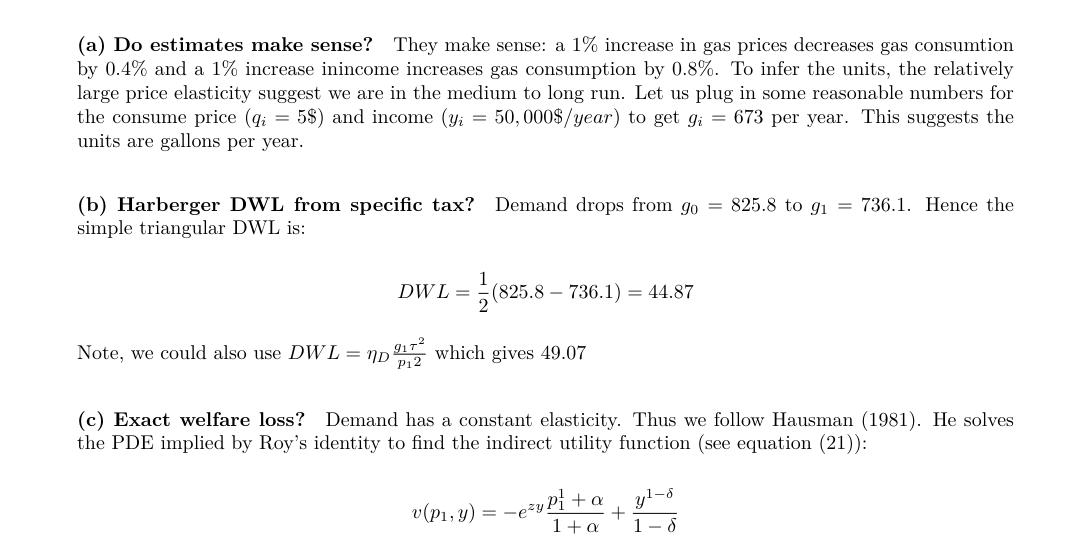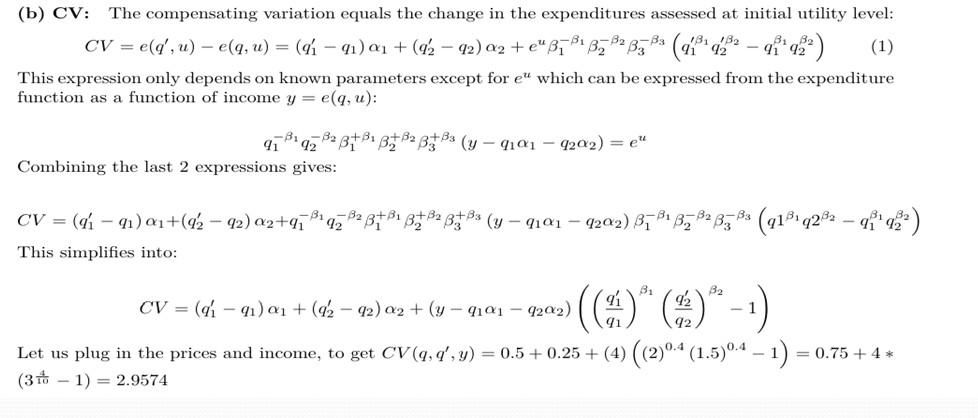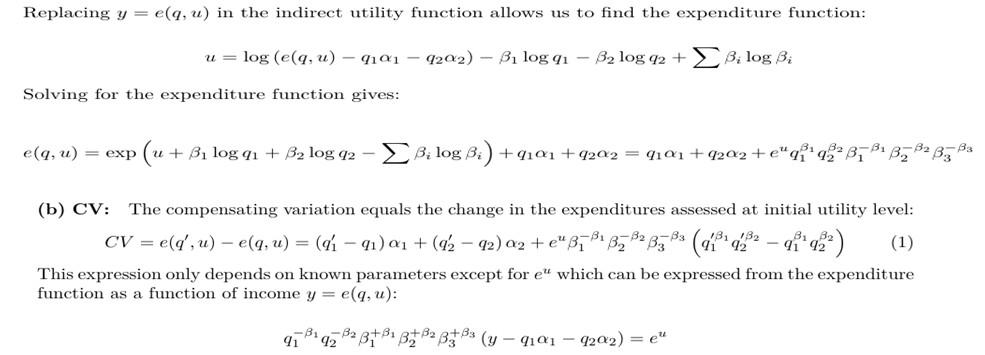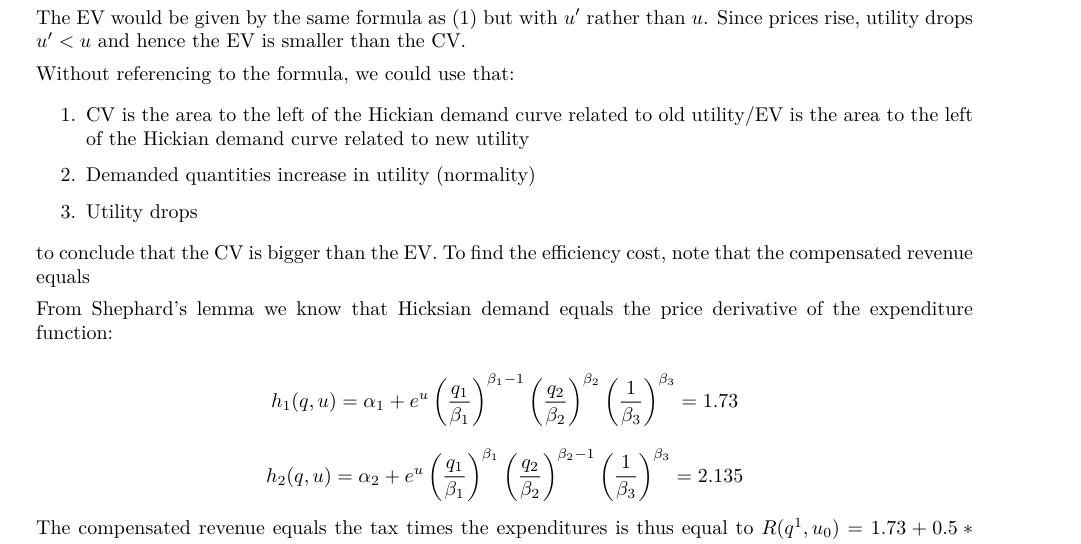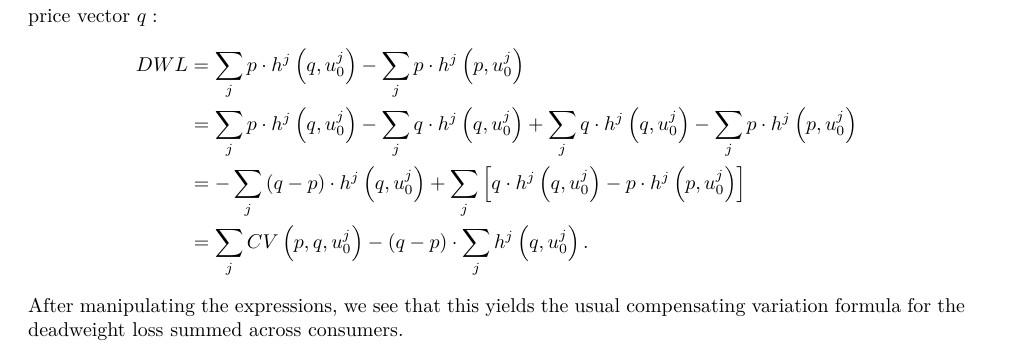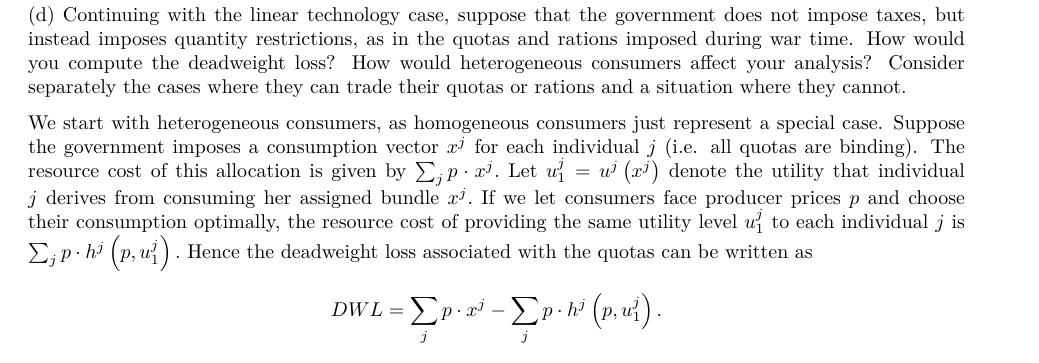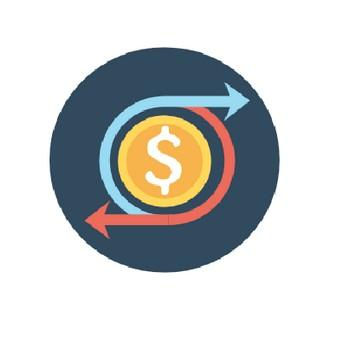Question 1
Assume that a consumer's utility function is given by:u(x1, x2, x3) = ß1 log (x1 - α1) + ß2 log (x2 - α2) + ß3 log x3 and that the consumer faces consumer prices q1 and q2, with the price of good three normalized to unity. The consumer's endowment (y) is measured in units of good three.
(a)Find the indirect utility function and expenditure function corresponding to this set of preferences. This is the famous Stone-Geary utility function, the basis for the linear expenditure system in demand analysis.
(b)Use your results from (a) to find an analytic expression for the compensating variation. In the special case of α1 = α2 = .50 and ß1 = ß2 = .40, find the CV associated with a tax reform that changes (q1, q2, y) from (1, 1, 5), a setting with no taxes, to (2.0, 1.5, 5). Find the efficiency cost of the tax reform, defined as CV minus the compensated revenue associated with this reform.
Question 2
Assume that cross-sectional data on household demand for gasoline (gi), with households located in different states and facing different gasoline tax burdens, suggests a demand curve of the form:
ln gi = -1.50 - 0.40 * ln qi + 0.80 ln yi (0.20) (0.07) (0.20) where qi denotes the tax-inclusive price of gasoline facing household i and yi denotes household i's income in dollars. Assume that the producer price of gasoline is $3.00.
(a)Do the parameter estimates make sense? What units might gi be measured in?
(b)For a household with income of $50,000, find the Harberger triangle estimate of the deadweight loss from a specific tax of $1.00/gallon of gasoline.
(c)Using the indirect utility function and expenditure function corresponding to this demand curve, find the exact welfare loss (CV - Hicksian Revenue) associated with a $1/gallon for a household with an income of $50,000. How does this compare with the triangle estimate in (b)?
(d)Without doing any calculations, describe briefly how you would compute the standard error of the estimate of exact welfare loss in (c). Besides the standard errors listed above, what other information would you need for this calculation?
Question 3
Consider a consumer endowed with an exogenous income y. If there is an initial price vector p0 and a post-reform price vector p1 , we know that both the compensating variation CV(p0,p1,y) and the equivalent variation EV(p0,p1,y) provide a meaningful welfare ranking of p0 and p1 . Suppose now, however, that the status quo p0 is being compared with two possible price vectors p1 and p2 . For instance, the government considers which goods to tax, starting from a no tax situation.
(a)Show that the consumer is better off under p1 than under p2 if and only if EV(p0,p1,y)<EV(p0,p2,y). Thus, the measures EV(p0,p1,y) and EV(p0,p2,y) can be used not only to compare these two price vectors with p0 , but also to determine which of them is better for the consumer.
(b) By constructing an example, show that a comparison of CV(p0,p1,y) and CV(p0,p2,y) does not necessa rily rank the consumer’s welfare under p1 and p2 correctly. Interpret this result.
(c) Assume a linear production technology so that the producer price vector p is fixed. In this setting, the resource cost of providing the consumer with a welfare level u0 is equal to e0=∑i pi hi(p,u0), where hi(.) denotes the consumer’s compensated demand function for good i. If we distort consumer prices to a new price vector q (for instance by imposing a tax vector τ=q-p), the resource cost necessary to provide the consumer with utility u0 becomes e1=∑i pi hi(q,u0).
The deadweight loss of moving from consumer prices p to consumer prices q is given by e1-e0=CV(p,q,u0)- ∑i(qi-pi)hi(q, u0).
This simply states that the deadweight loss can be interpreted as the additional resource cost, relative to that provided when the price vector is p, that is needed to provide utility u0 to the consumer under the distorted consumer price vector q. How would you the analysis to incorporate a population of consumers with heterogeneous preferences?
(d)Continuing with the linear technology case, suppose that the government does not impose taxes, but instead imposes quantity restrictions, as in the quotas and rations imposed during war time. How would you compute the deadweight loss? How would heterogeneous consumers affect your analysis? Consider separately the cases where they can trade their quotas or rations and a situation where they cannot.
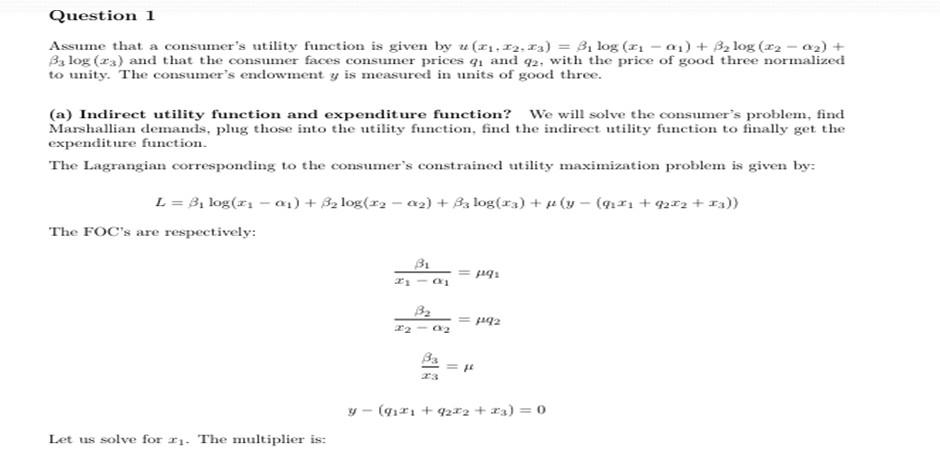


https://www.economicshomeworkhelper.com/



